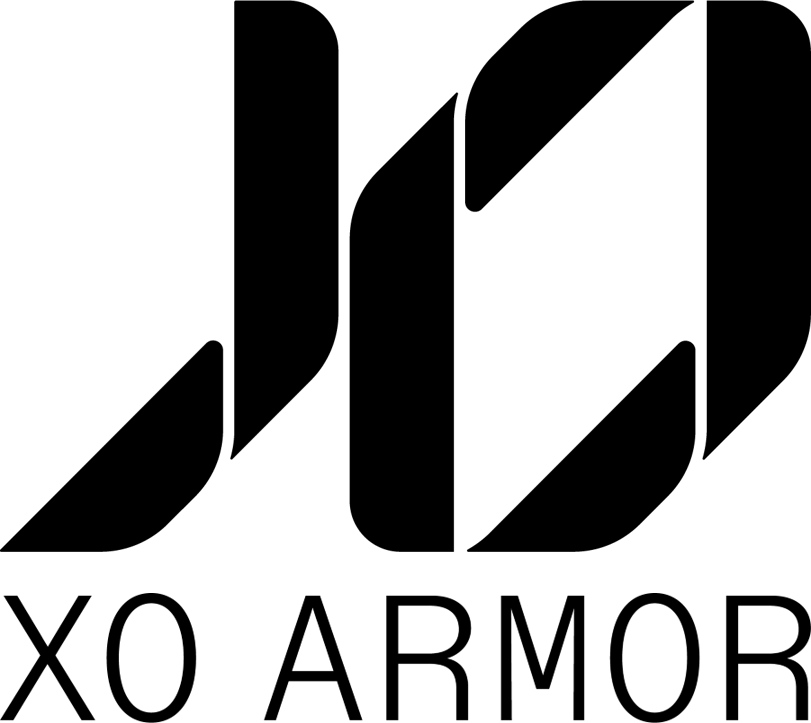Case Study

Title: Impact Strength Testing of Customized 3D-Printed Guards
Authors: 1,2Michael Zabala, PhD., Grace Gray
Laboratory: Auburn University Biomechanical Engineering Lab, Auburn, AL, USA
Director, Auburn University Biomechanical Engineering Lab
Founder, Chairman XO Armor
The purpose of this study was to investigate the strength at impact of XO Armor customized, 3D printed shoulder guards for use in football. The potential benefits of these guards are numerous, including an increase in mobility due to the thin design (3 mm), to greater protection because of extreme customization that follows the complex contours of the body, thus maximizing force distribution.
However, strength to prevent breaking is paramount to the device’s functionality.
The 3D printed guards for this study were developed by first obtaining a 3D scan of the shoulder on a Body Opponent Bag (BOB)® using the proprietary XO Armor smartphone app. This scan was then used to create a virtual model of the negative of BOB’s shoulder. The negative was 3D printed as a mold which was filled with concrete to generate a replica of BOB’s shoulder. Eight millimeter thick Shockshield® was overlaid on the concrete shoulder to replicate soft tissue (Figure 1A). The shoulder scan was also used to generate a virtual model of multiple shoulder guards for testing. Three shoulder guards were modeled and printed: 2. a 3 mm thick guard with no offset and no padding and with the printer interrupted for 24 hours halfway through the print, 3. a 3 mm guard with a 3 mm offset and 3 mm thick Ethylene-vinyl acetate (EVA) padding. 1. a 3 mm thick guard with no offset and no padding,All 3D printing was performed on a Raise3D® Pro2 printer using polylactic acid (PLA) as the material. A drop tower was built to allow for a controlled helmet drop of approximately six feet, directly onto the guards (Figure 1 B,C). Each guard was placed on the concrete mold of the shoulder underneath the drop tower and was struck by a football helmet with added mass to total 9 kg. It was hypothesized that for each guard design, the guard would not break after the first strike, but would break on or before the tenth strike. During each trial, a Vicon® motion capture system was used to record the velocity of the helmet through impact and two AMTI® force plates were used to record the impact force at 2000 Hz.
The results of this study provided valuable information on the strength of the XO Armor 3D printed guards. Table 1 shows the average force (lb), momentum (kg-m/s), and the trial number in which the guard broke for each of the three guard designs. A fourth condition was added to testing after the third guard, a 3 mm guard with 3 mm thick EVA padding, did not break during any of the ten impacts.
For this fourth condition, the total helmet mass was increased to 10.8 kg. This increase in mass increased the momentum to 57.46 kg-m/s, higher than the estimated average NFL linebacker’s head and helmet during a full-speed tackle [1, Appendix].
The results of the initial three testing conditions demonstrated the durability of the guards. The only guard to break was the 3 mm thick guard that was interrupted during printing and it broke on the tenth impact. Moreover, the average impact force for all ten impacts was over 2,000 pounds. The additional fourth testing condition provided useful information on the strength limit of the guard. Notably, the helmet used for testing also broke on the same 17th strike. Overall, the testing conditions were determined to be more extreme than any hit experienced during a football game. This is because although momentum of the impact was matched, the guards were placed on a concrete shoulder which was set against an immovable surface, the ground. The high strength of the guards determined from this study indicates a good potential for use in sports.

Figure 1. A.) 3D printed guard on BOB® replica shoulder. B,C.) Test rig. D.) Broken helmet and guard.
Table 1. Impact Testing Results. *Indicates that this guard was impacted 10 times with a total helmet mass of 9 kg, then impacted seven more times with a helmet mass of 10.8 kg until a break occurred. On the 17th impact both the guard and the helmet broke.

References
[1]. N. Yoganandan, F.A. Pintar, J. Zhang, J.L. Baisden. Physical properties of the human head: mass, center of gravity and moment of inertia. J Biomech, 42 (9) (2009), pp. 1177-1192
Appendix
Estimates
95th% male head: 5.377 kg (11.85 lb) head mass [1]
Assumed impact velocity of a tackle: 25.2 fps (7.7 m/s, 17.2 mph) Momentum of head and helmet at impact: 5.377 kg*7.7 m/s = 41.4 kg m/s

Share:
Custom-Fabricated Low-Profile Wrist and Thumb Brace for a Football Player: A Case Study.
Custom 3D-Printed Shoulder Brace by XO Armor Technology: A Case Study in Labrum Surgery Rehabilitation for a Division 1 Football Player